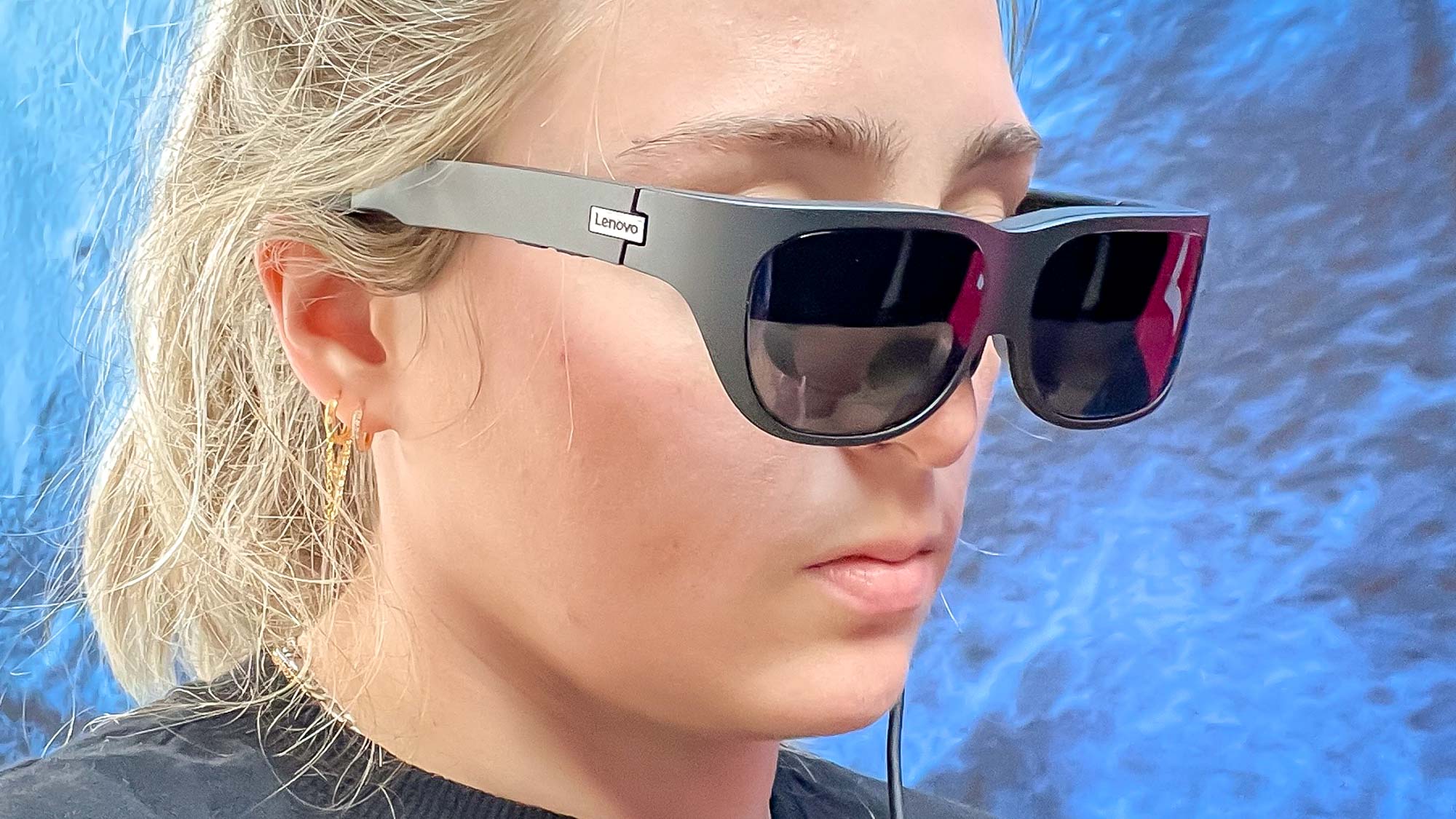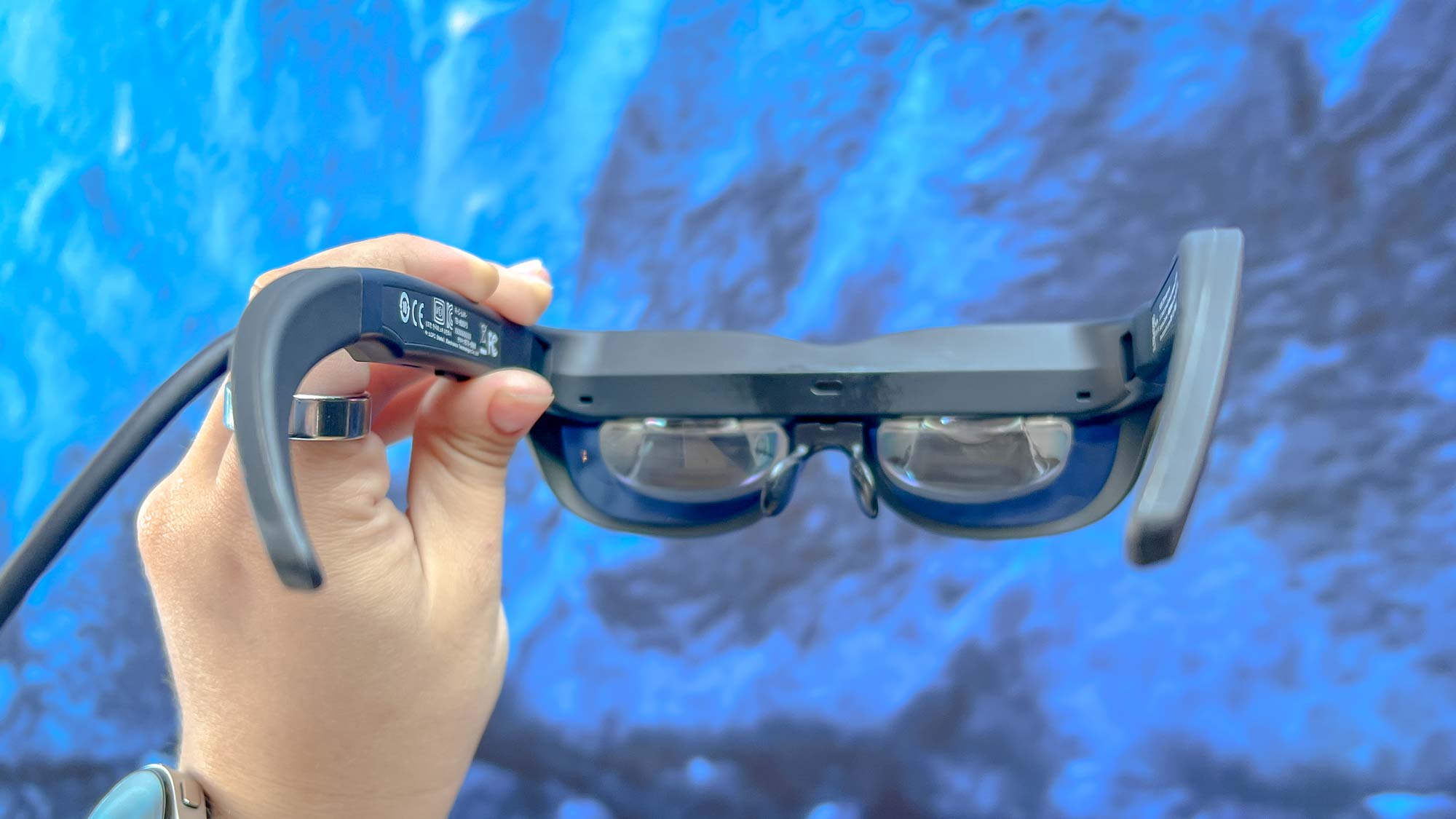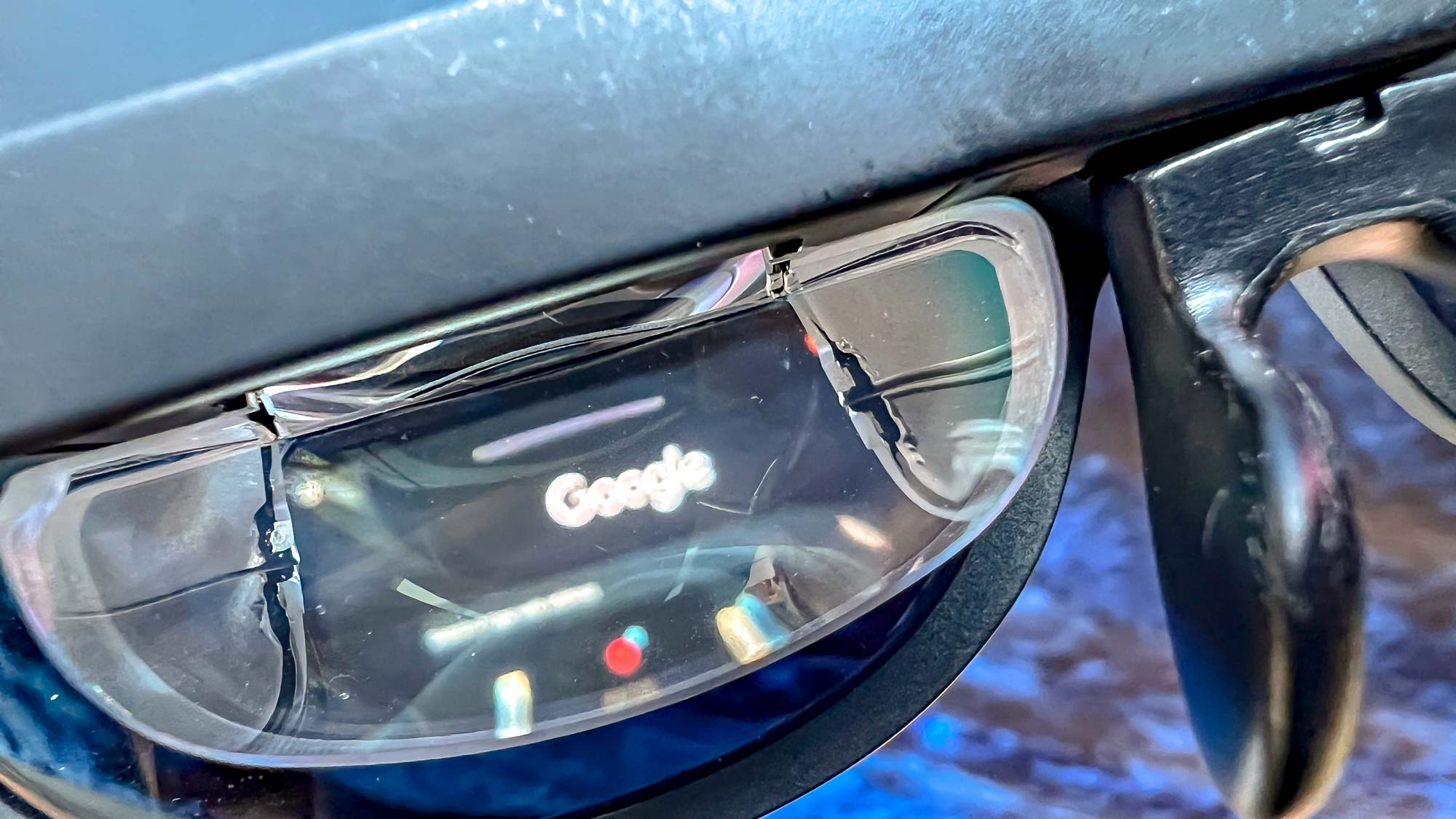I just tried Lenovo’s new smart display glasses — is this the future?
The Lenovo Glasses T1 are surprisingly good

As much as I'm ready for the smart glasses revolution to take over all our faces, I know most people don't feel the same way. But maybe a product like the new Lenovo Glasses T1 will aide the transition towards wearing technology over our eyes out in public.
I say out in public, because unlike the best VR headsets designed for entertainment in the safety of your home, the Lenovo Glasses T1 are pitched as a portable external display. In other words, these "smart" glasses don't hold the promises of the Apple AR/VR headset or gaming experiences of the Oculus Quest 2. Instead, the T1 give you a private — albiet, slightly suspicious — way to work or watch content.



Let's just say they're not as stylish as Ray-Bans, or the Meta Ray-Ban smart glasses. The all-black body and tinted lenses are rather drab. But the Lenovo Glasses T1 will supposedly come with multiple nose bridge attachments, helping the wearing find a comfortable fit. Either way, you're not the one who has to look at them.
You'll be looking at a pair of 60Hz Micro OLED displays with 1920 x 1080-pixel resolution per eye. The displays will mirror that of a connected device. Yes, I said connected; using the Lenovo Glasses T1 requires a cable be connected from the frames to an smartphone, tablet or laptop at all times. During my brief demonstration of the portable display, I didn't mind so much. I even appreciated how the connection eliminates any conversation about battery life or Bluetooth.

Will I feel the same way were I to use the Lenovo Glasses T1 on, say, an airplane? It's hard to say. Cordless usually equals convenience. While I fully understand the practicality, it really prevents these glasses from feeling high-tech.
Still, using them is unexpectedly intuitive. I had it paired to a Motorola phone (no surprise Motorola plays nice with Lenovo devices), transforming the handset into a trackpad for navigating the simple glasses interface. It took just a few seconds to navigate to our own website, and then to YouTube.
Sign up to get the BEST of Tom's Guide direct to your inbox.
Get instant access to breaking news, the hottest reviews, great deals and helpful tips.
The Glasses T1 use bone conduction technology for audio, letting me watch a few YouTube clips in my own private viewing suite. The sound wasn't spectacular but as strong as I've seen as other bone conduction headphone-glasses hybrid products.

Though I mentioned a Motorola Edge phone as the paired demo device, I'm pleasantly surprised the Glasses TI will work with a number of Android, Windows and iOS devices, with exceptions for adapters and content compatibility. Lenovo cautioned my experience might look different if I used my iPhone as the control source instead.
@tomsguide ♬ Grammarg - BLVKSHP
Are portable displays the gateway to smart glasses?
The Lenovo Glasses T1 aren't the first smart glasses built on a portable display experience. TCL demonstrated a pair called NXTWEAR G during CES 2022. Similarly, the lenses are unattractive though successful in proposing an accessible application for so-called smart glasses.
As one of the most hyped devices I can recall in my time reviewing tech, the rumored Apple AR/VR glasses have a huge hurdle to face for adoption. Asking customers to go about their day with anything unusual over their eyes is a risk most people might not be ready for.

At least with a product like the Lenovo Glasses T1, which worked as advertised from what I saw, you're comfortably tied to the real world. Literally, the cord kept me aware of my surroundings enough, while the frames actually left me glimpse down at the paired smartphone as I learned my around the trackpad controls.
If you ask me, feeling grounded is necessary for the smart glasses experience. Sure, in a VR headset you can escape in complete immersion from the safety of your living room. But for smart glasses, or lenses you'd wear in an office space or commute, wouldn't you want a grasp on reality?
That's exactly what I like about the Lenovo Glasses T1. They don't feel as experimental as I might've presumed. I can totally see them as a solution for doing work on a train without your screen vulnerable nosy onlookers. Your prerogative is your own business.
Unfortunately, availability and price remain vague. Lenovo said the Lenovo Glasses T1 will go on sale in China in late 2022, and come to "other select markets" sometime in 2023, targeting a price under $500. When the glasses do finally launch, make sure to check our Lenovo coupon codes page to see if we can help you save on the final price.
Kate Kozuch is the managing editor of social and video at Tom’s Guide. She writes about smartwatches, TVs, audio devices, and some cooking appliances, too. Kate appears on Fox News to talk tech trends and runs the Tom's Guide TikTok account, which you should be following if you don't already. When she’s not filming tech videos, you can find her taking up a new sport, mastering the NYT Crossword or channeling her inner celebrity chef.

